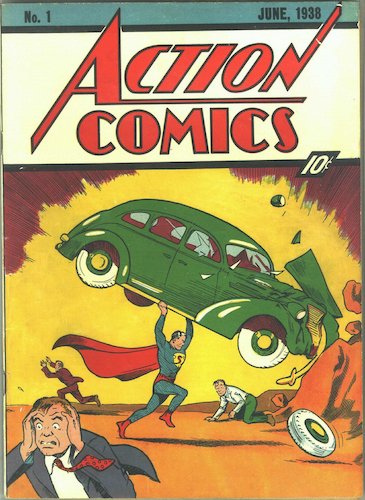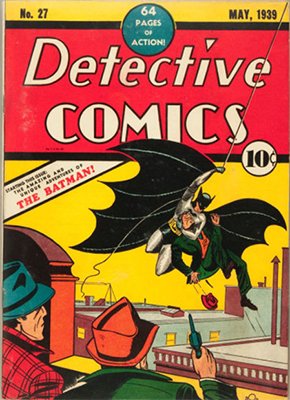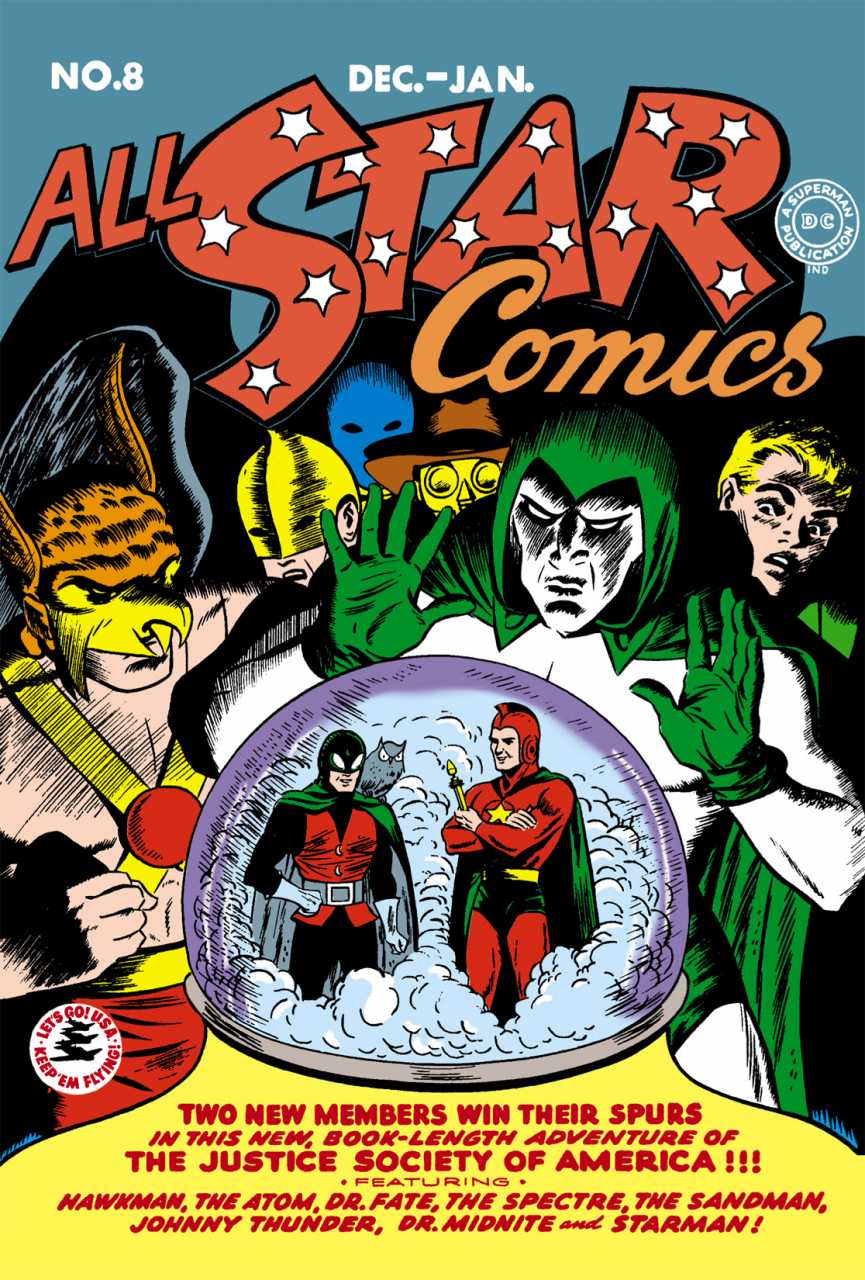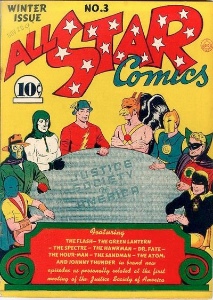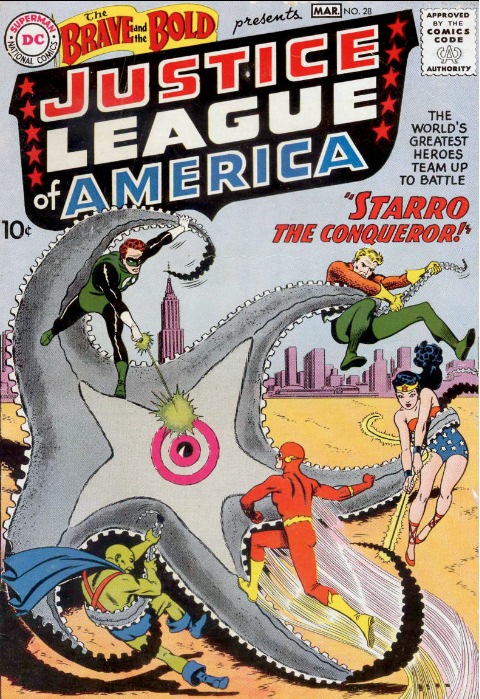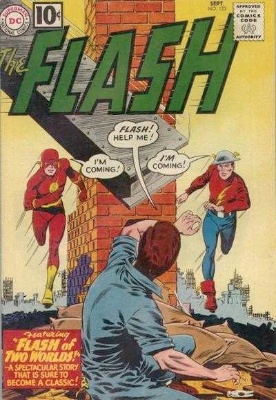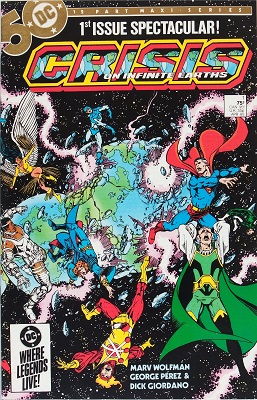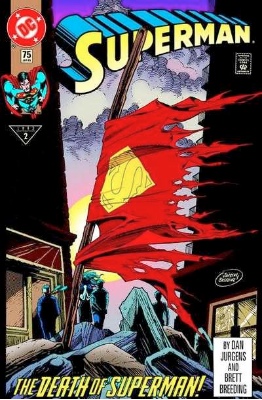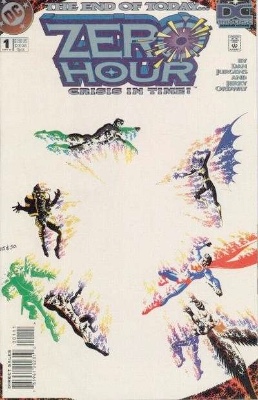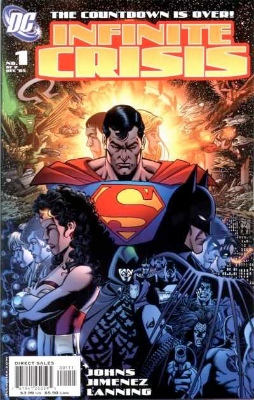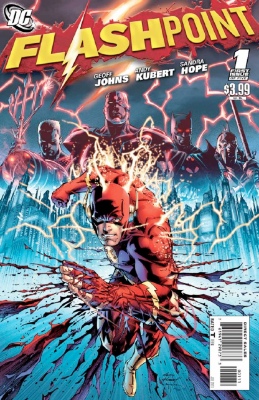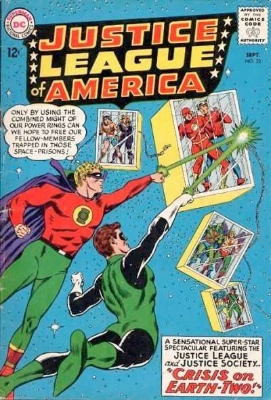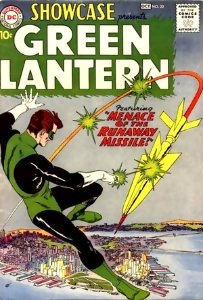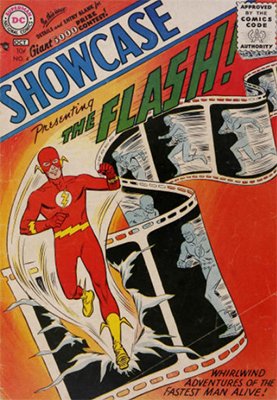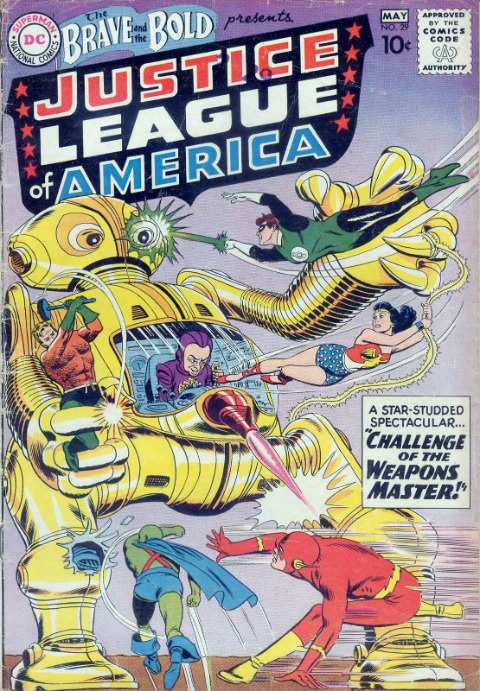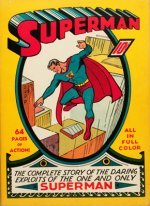DC Universe Comic Book Price Guides
The DC Universe is a fictional comic book universe, where the stories of DC Comics, whose cast of well-known characters include Batman, Superman, and Wonder Woman, take place.
Superman, arguably the most popular comic book hero of all, debuted in Action Comics #1 in 1938.
Born on the planet Krypton and raised by his Earth parents, Jonathan and Martha Kent, Superman went on to become not only the face of DC Comics, but an icon of American culture, spawning a successful superhero movie franchise (first portrayed by Christopher Reeve), a television show, video games, and action figures.
Batman, another popular DC comic book character, was introduced in Detective Comics #27 in 1939.
|
Action Comics #1 was the first of the DC Universe comics, introducing Superman. |
Detective Comics #27 was the first appearance of Batman, a key player in the DC Universe. |
A billionaire philanthropist who witnessed the tragic murder of his parents, Batman would eventually team up with Robin, his crime-fighting partner, to take on such evil villains as the Joker, Penguin, Bain, and the Scarecrow.
Batman also generated billions of dollars in revenue from movie franchises, video games, TV shows, action figures, and even theme park attractions.
Wonder Woman, a fierce warrior who became the Amazon ambassador to mankind, debuted in All Star Comics #8 in 1941.
The daughter of the queen of Paradise Island, Wonder Woman would later become the subject of a TV show, starring Linda Carter. Rumors abound of a future movie of the Amazon warrior, though DC has yet to confirm such news.
Justice Society and Justice League
In 1940, All Star Comics #3 established that DC characters coexisted in the same universe, when several superheroes, who had appeared in separate stories up to that point, met and formed a group called the Justice Society of America.
The team initially included Doctor Fate, the Spectre, Hour-Man, Green Lantern, Hawkman, the Flash, the Atom, and Sandman.
It would later expand to include such popular characters as Batman, Superman, Wonder Woman, Captain Marvel, and Power Girl.
In 1960, the Justice League of America made its first appearance in Brave and the Bold #28.
Featuring Superman, Batman, Wonder Woman, the Flash (Silver Age), Green Lantern (Silver Age), Aquaman, and the Martian Manhunter.
Over the years, the League underwent different incarnations — including a European version — and expanded its ranks.
Eventually the JLA would include such popular heroes as Green Arrow, Black Canary, Firestorm, Booster Gold, Zatanna, and Cyborg.
The DC Multiverse
Though the DC Universe enjoyed a surge in popularity in the mid-1900s, continuity was not a focus of writers, which sometimes meant that storylines and characters were not consistent.
In fact, over time the DC Universe presented multiple versions of Superman, Flash, Green Lantern, Wonder Woman, and other popular characters.
To reconcile these different versions, DC developed the concept of the multiverse, which was first introduced in Flash #123, when the Silver Age and Golden Age versions of the Flash met.
This new concept of different universes allowed various versions of characters to co-exist, by simply explaining that each lived on different Earths in different universes.
DC writers ultimately named them Earth-One, Earth-Two, and so on.
Crisis on Infinite Earths
Over time, the DC Universe became populated with more and more characters, and by nature of the multiverse, more versions of those characters.
It became increasingly difficult for writers to maintain character consistency and continuity. In addition, it became problematic to keep track of what version of each character belonged in which universe.
Finally, in 1985, DC Comics published Crisis on Infinite Earths, a 12-issue series that is considered among comic book fans as one of the most important comic book events of all time.
Crisis, as it's lovingly called, was a multiple-universe-spanning crossover that ultimately merged the different Earths and characters into a single universe. It ultimately resulted in the death of Supergirl, and the disappearance of the Barry Allen version of the Flash into the timestream.
It also left Kal-L (Superman) of Earth-Two, Lois Lane of Earth-Two, Alexander Luthor, Jr. of Earth-Three, and Superboy Prime trapped in a pocket universe that was no longer part of DC's ongoing continuity.
Though Crisis on Infinite Earths was a significant attempt to clean up the mess of a convoluted continuity, it created its own set of problems.
Power Girl, who in pre-Crisis continuity was the Kryptonian cousin of Superman, was now simply mistaken as his cousin, but was truly of Atlantean origin.
Donna Troy, who was raised on Paradise Island by the Amazons and served as Wonder Girl of the Teen Titans, now had Greek Titan origins, since Wonder Woman no longer existed in the post-Crisis universe.
In addition, the Legion of Superheroes, a 31st century superhero team, counted Superboy and Supergirl among its members, though neither existed following the end of the Crisis series.
Despite the continuity hiccups, the new streamlined universe proved popular with fans.
DC would go on to launch an international version of the Justice League, drop the "teen" from Teen Titans, and bring back a revamped version of the Justice Society of America.
Why This Guide is AWESOME for Wannabe Comic InvestorsIf you have either tried (and failed) to make money flipping comic books, or are frustrated by the huge array of choice out there, then this is the eBook for you. It's packed with 32 in-depth analyses of easy-to-buy and sell comic books from the Bronze to Modern ages. These are titles we have personally made a lot of money buying and selling. So can you. Make more than your money back with your first successful trade (or by NOT buying a losing book!). If you are not completely satisfied, we have a 365-day money-back guarantee. Click to read more, or order your copy today! |
The Death of Superman
In 1992, Superman finally met his match against Doomsday, a murderous alien born on the planet Krypton, in the multi-issue story arc, The Death of Superman.
Despite a melee through the streets of Metropolis, Superman — with the help of the Justice League International — finally defeated the powerful villain, though he ultimately succumbed to his injuries.
Subsequently, Superman was remembered with a funeral that attracted hundreds of DC Universe heroes.
But the Man of Steel wouldn't stay dead for long. DC soon began a new story arc, The Reign of the Supermen, which introduced a new Superboy, along with several other new heroes that either claimed to be the Superman or were taking up his mantle.
This storyline culminated in the eventual return of Superman, though with a slightly different look.
Zero Hour: Crisis in Time
In 1994, DC attempted to repair some of its continuity inconsistencies that remained after the Crisis on Infinite Earths series with Zero Hour: Crisis in Time, a five-issue crossover storyline.
Former Green Lantern, Hal Jordan, outraged at the destruction of Coastal City, his hometown, transformed into the villainous Parallax and attempted to destroy the DC Universe.
During the event, different versions of DC characters appeared throughout various storylines, causing confusion.
Their appearances were the result of a broken timeline caused by Extant, who was actually the former Hawk of the Teen Titan duo Hawk and Dove.
Though the timeline was ultimately restored, Jordan was killed, and more continuity chaos ensued.
Infinite Crisis
In 2005, the company launched an appropriate sequel to Crisis on Infinite Earths called Infinite Crisis.
In this seven-issue series, Kal-L of Earth-Two, Lois Lane of Earth-Two, Alexander Luthor Jr. of Earth-Three, and Superboy Prime left the pocket universe they had inhabited since the end of the Crisis on Infinite Earths event.
Kal-L sought to replace post-Crisis Earth with pre-crisis Earth-Two in hopes that the native environment would aid Lois' failing health.
Meanwhile, Superboy Prime and Alexander Luthor, using the power of various heroes and villains, as well as remnants of the Anti-Monitor, were able to restore pre-Crisis Earth-Two, which was believed to have been destroyed.
Ultimately, Lois Lane, Kal-L, and Alexander Luthor Jr. perished during the events surrounding Infinite Crisis, along with a number of other DC heroes, including Superboy, Blue Beetle, and Doctor Fate.
Flashpoint 2011
In September 2011, DC Comics decided to reboot — and revamp — the DC universe once again, with the five-issue series Flashpoint.
It saw the return of Barry Allen (the Flash), who wakes to discover that he's trapped in an alternative timeline where the Justice League, including his alter ego the Flash, do not exist.
Allen meets with this new timeline's Batman — Thomas Wayne, the original Batman's father — to seek help correcting what has gone wrong.
Though initially Allen believes that Professor Zoom — the Reverse Flash — is responsible for the cause of the new timeline, he eventually learns that he himself is responsible for inadvertently creating it, after attmpted to stop the Reverse Flash from killing his mother.
Using the speed force, Allen travels back in time and merges with his younger self to defeat the Reverse Flash. While traveling through time, Allen sees three distinct timelines — the DC Universe, Vertigo universe, and Wildstorm universe — which ultimately leads to the merging of the three universes into one.
He also sees Pandora, a mysterious figure who will play a significant part in the new DC Universe, and an upcoming Justice League crossover event, The Trinity War.
In the new DC Universe, several significant changes have occurred, among them:
- Superman has a new costume and origin
- Wildstorm characters, such as Apollo, Caitlin Fairchild, and Grifter, are now integrated among the DC universe
- Barbara Gordon, the original Batgirl who was paralyzed by the Joker and would later become the wheelchair-bound hero Oracle, is now back in costume as the female caped crusader
- and Wonder Woman, who was originally made of clay from the Earth, now has a father — Zeus, the God of Thunder
In addition, the origin and roster of the Justice League has been altered, with Cyborg replacing Martian Manhunter as an original member.
More of our Comic Price Guides
|
Value of DC Comics Characters in the DC Universe | |
|
Green Lantern Silver Age Comic Book Price Guide | |
|
Silver Age the Flash Comic Book Price Guide | |
|
Justice League of America Comic Book Price Guide |

